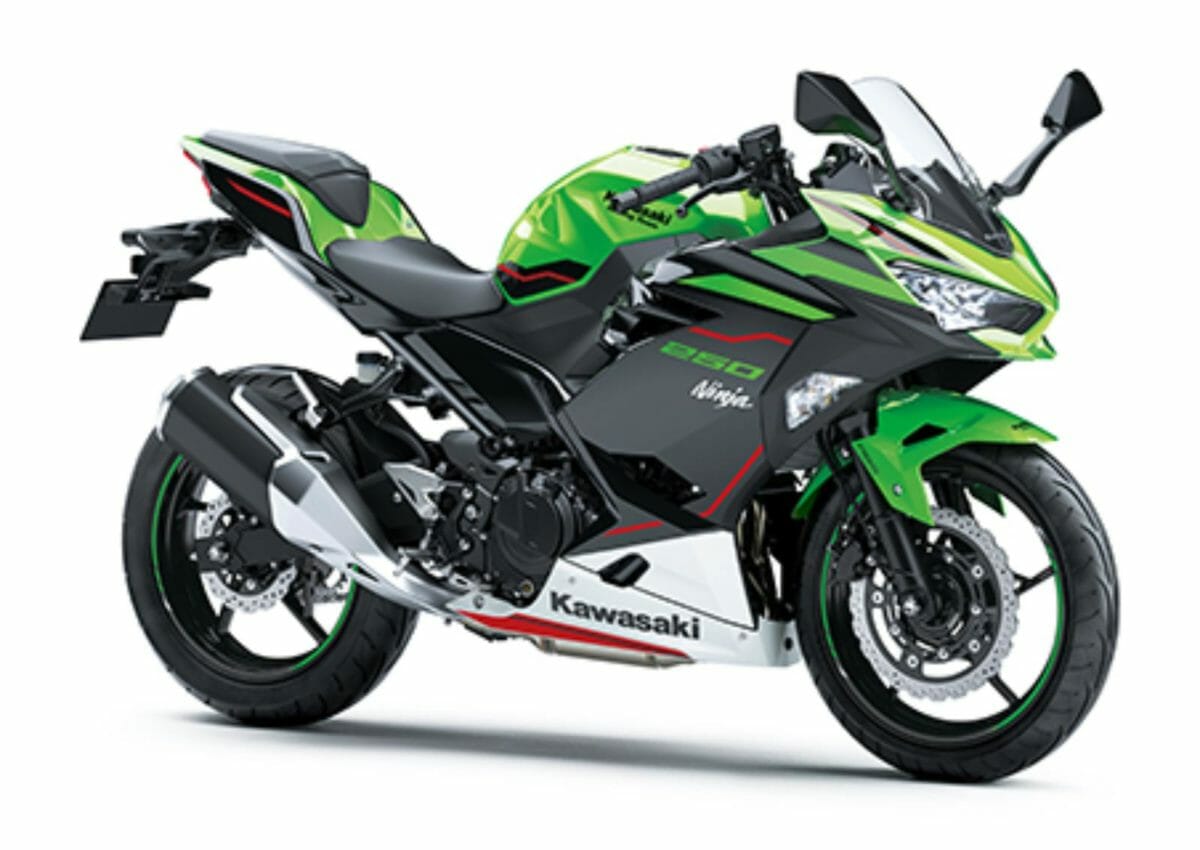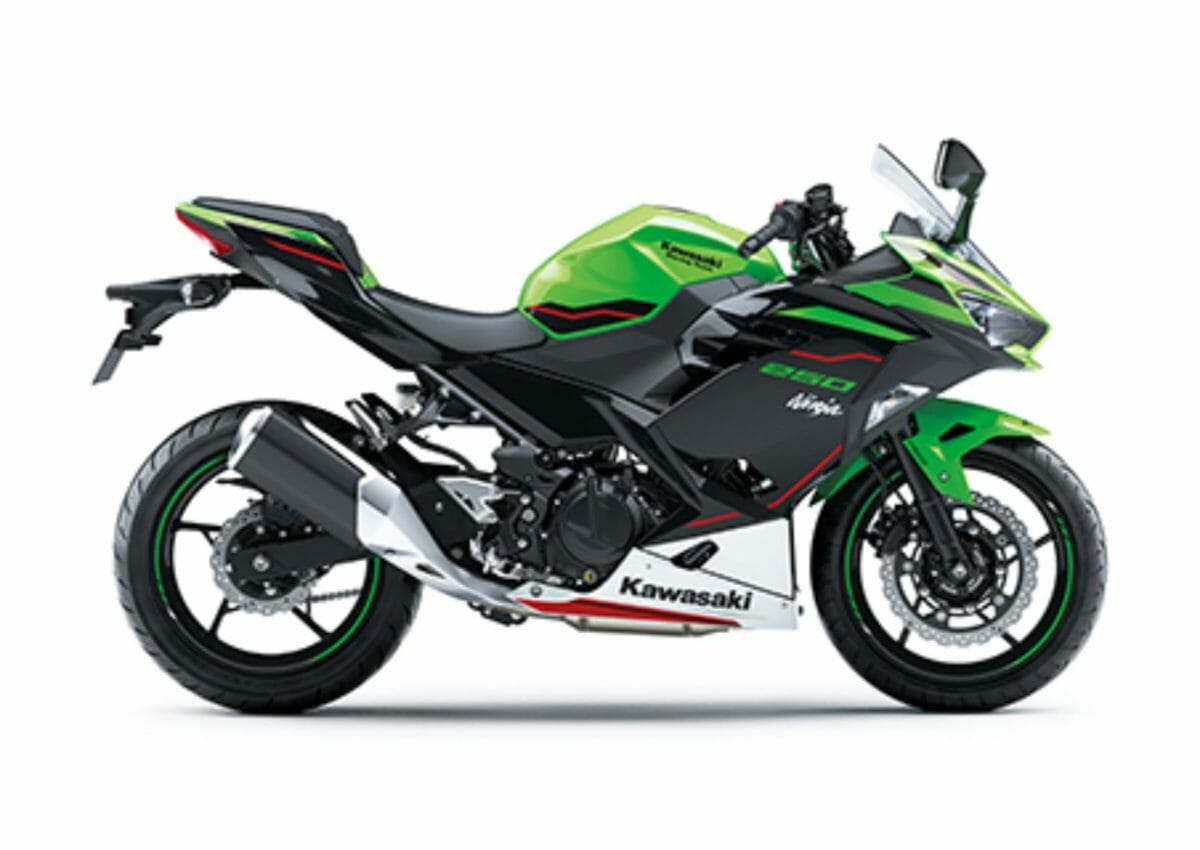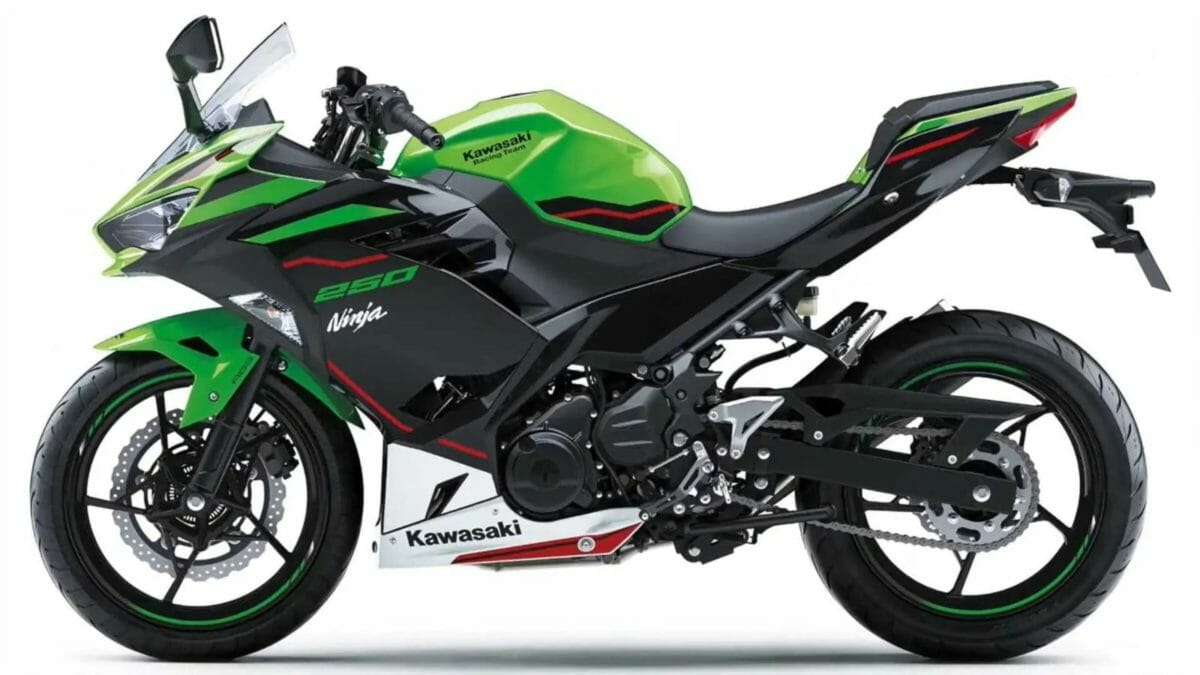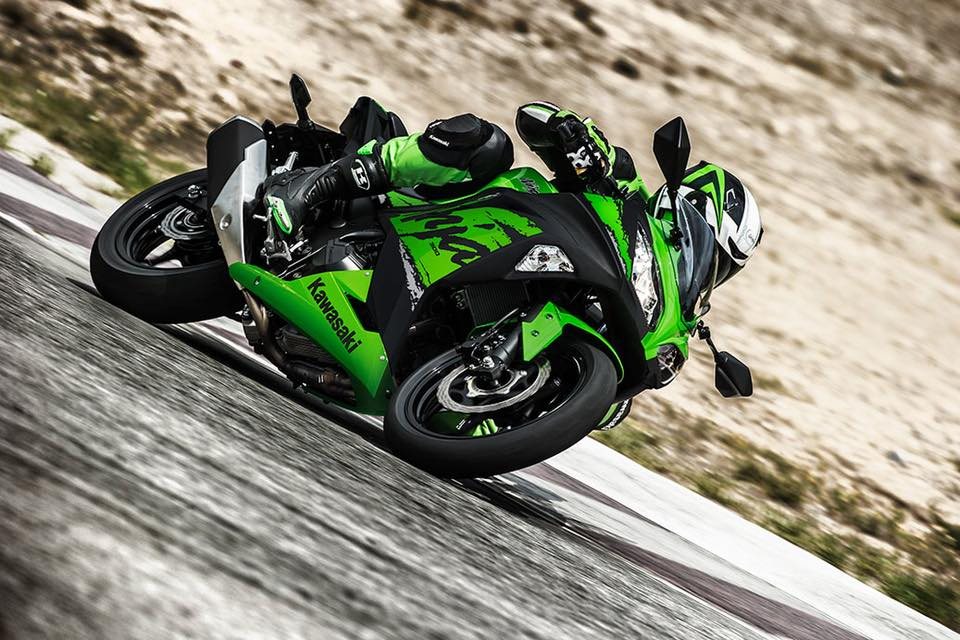The Kawasaki Ninja 250 is one of the most well-known quarter-litre sportsbikes out there. It is considered to be the segment starter in India when it comes to affordable performance motorcycle segment. The onslaught of its rivals resulted in its discontinuation and the Ninja 250 never returned to India. The updated model which is on sale currently in International markets is vastly different and more modern than the one that we used to have here. And now, Kawasaki has unveiled the 2021 iteration of the Ninja 250 in Japan.
More details
While it remains mechanically the same as before, it is now blessed with the same KRT edition livery seen on the Ninja 400.

New livery
The new livery will instantly remind you of the WSBK championship bike’s livery. For the uninitiated, WSBK is considered to be Kawasaki’s dominion as Jonathan Rea manages to smoke his rivals astride his Kawasaki. The Ninja 250 still retains the signature green shade but the KRT edition makes it look even sportier with black, red and white accents splattered all around its bodywork. Like we mentioned earlier, for the MY2021, the KRT edition is the only change and the bike remains the same mechanically.

Specifications
It is still powered by a 248 cc parallel-twin, liquid-cooled, DOHC engine. Coupled to a 6-speed gearbox. The engine is good enough to produce 37 PS of power and 23 Nm of torque. The suspension system includes 41 mm standard telescopic fork in the front and a bottom link monoshock in the rear. The ground clearance and seat height are 145 mm and 795 mm respectively. The Ninja 250 continues to be fitted with an assist and slipper clutch as standard.

Kawasaki Ninja 300
Kawasaki brought in the Ninja 300 to our country after it pulled the plug on the Ninja 250. The Ninja 300 was powered by a 296cc, DOHC, 8-valve, liquid-cooled, parallel-twin engine which produced about 39 PS of power at 11,000 rpm and 27 Nm of peak torque at 10,000 rpm, and was mated to a 6-speed gearbox. The braking duties were governed by a 290 mm disc brake at the front, and a 220 mm disc at the back. Both these disc brake units were looked after by one of the smallest ABS systems in the world.
Also read: Kawasaki Introduces 2021 Z H2 SE

Even though we have so many players battling it out in the affordable performance motorcycle segment, Kawasaki’s presence is surely being felt. We just hope that the Japanese giant brings some green madness in this segment as well.
